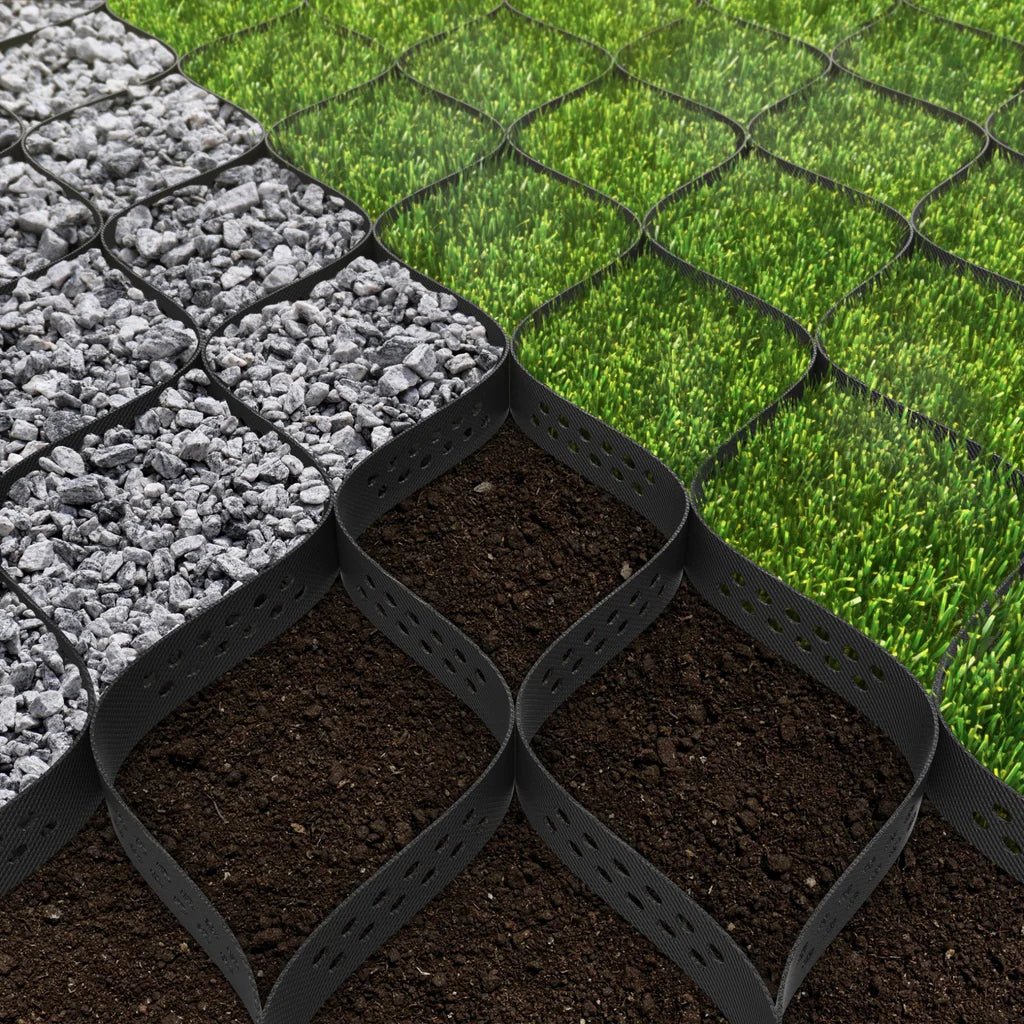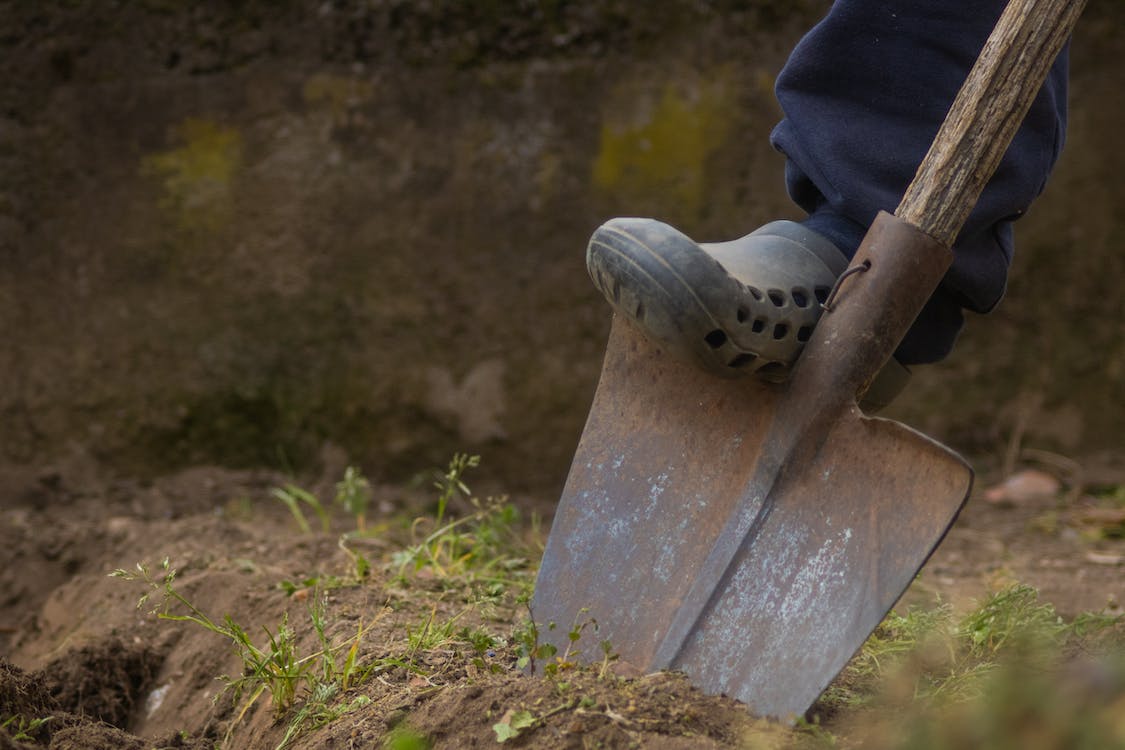When it comes to constructing soil structures, stability is key.
Retaining walls, reinforced soil structures, parking lots and other wall and slope applications require careful planning and execution to ensure their long-term effectiveness and safety. One solution that has become increasingly popular in recent years is the use of GeoCells.
In this blog post, we will explore the world of GeoCells and how they can be used to enhance the bearing capacity of soil structures, as well as the stability and design of other landscaping features. From understanding the benefits and best applications of GeoCells to tips for getting the most out of your product, we will provide a comprehensive overview of this innovative technology. So whether you're a geotechnical engineer, construction professional, or someone with a new landscaping project in mind, read on to discover the many advantages of GeoCells.
What Are GeoCells?
A GeoCell is a type of geosynthetic material that is commonly used in civil engineering and construction projects for soil reinforcement and stabilization. GeoCells are typically made of high-strength polymers and are designed to distribute the weight of the soil and any loads applied to the surface evenly, reducing the potential for soil erosion, subsidence, and other forms of damage. GeoCells are an essential component in many modern construction applications, such as retaining walls, reinforced soil structures, and landfill liner systems.
GeoCells are available in various sizes and shapes, including square, rectangular, and triangular. The shape and size of the GeoCells are determined by the specific application. Some projects may be more suited to a 2-inch GeoCell, for example, while others may require an 8-inch GeoCell.
The unique design of GeoCells allows them to create a stable, reinforced soil mass that can withstand higher loads and provide greater stability than unreinforced soil. By interlocking with the soil particles, GeoCells enhance the overall performance of the soil structure, providing a cost-effective solution for building taller walls or structures on unstable soil.
What Are the Benefits of A GeoCell?
GeoCells offer several benefits that make them a popular choice for construction and landscaping projects.
One of the primary benefits of GeoCells is that they enhance the bearing capacity of soils. This means that they can support more weight, which is especially important when constructing taller walls or structures. By using GeoCells, engineers can reduce the amount of material required to support the weight of the structure, resulting in cost savings.
Another benefit of GeoCells is that they can improve the machine direction bearing capacity ratio (MDR) and ultimate bearing capacity ratio (UBCR) of soil structures. This is important in situations where differential settlement may occur, such as in soft soils or areas with varying soil conditions. By reinforcing the soil structure with GeoCells, engineers can ensure that the load is distributed evenly across the structure, reducing the risk of differential settlement.
GeoCells are relatively lightweight and easy to install, making them a popular choice for many types of projects. They are also resistant to corrosion, UV radiation, and other environmental factors, which makes them a durable and long-lasting solution for soil reinforcement and stabilization needs.
Popular GeoCell Applications

GeoCells are particularly useful across a variety of applications where soil reinforcement is required to achieve a desired level of stability or a particular design. Here are some of the primary applications of GeoCells.
Retaining Walls
When used in retaining wall applications, GeoCells can help to distribute the weight of the soil more evenly, reducing the stress on the wall and improving its overall stability. This can be particularly beneficial in situations where taller walls are required, as the GeoCells can help to reinforce the soil mass and prevent it from sliding or settling.
Parking Lots
GeoCells are also widely used in the construction of parking lots, both paved and unpaved. In paved lots, GeoCells help to reinforce the underlying soil and prevent cracking and deformation of the pavement over time. In unpaved lots, GeoCells help to provide a stable and durable surface for vehicles to drive on, reducing the risk of accidents and providing enhanced safety.
Roadways
GeoCells are commonly used in the construction of both paved and unpaved roadways. In paved roadways, GeoCells help to reinforce the underlying soil and prevent cracking and deformation of the pavement over time, extending the lifespan of the road. In unpaved roadways, GeoCells help to provide a stable and durable surface for vehicles to drive on, even in areas with soft or unstable soil conditions.
Reinforced Soil Structures
GeoCells can be used in reinforced soil structures, such as bridge abutments or foundations. By improving the bearing capacity of the soil, GeoCells can help to support heavy loads and reduce the risk of differential settlement.
Landscaping
GeoCells filled with grass can be used to create green roofs, rooftop gardens, and other landscaping features. The GeoCells provide a stable base for the plants to grow on, while also helping to retain moisture and prevent soil erosion.
Tips for Getting the Most Out of Your GeoCell
To get the most out of your GeoCell, it's important to select the right product for your specific application. Different GeoCells have different strengths and stiffnesses, so it's important to choose one that is appropriate for the load and slope conditions of your project. It's also important to ensure that the GeoCell is installed correctly, with the correct overlap and tension, to ensure that it is effective in reinforcing the soil mass.
In addition to proper selection and installation, regular inspection and maintenance are also important to ensure the long-term effectiveness of the GeoCell. This can include checking for damage or degradation over time, as well as monitoring the performance of the GeoCell in relation to the overall stability of the soil structure.
Vodaland Has All Your GeoCell Needs Covered
GeoCells have become an indispensable solution for various industries to improve their outdoor landscapes, including infrastructure, construction, and agriculture. By using GeoCells, you can enhance the stability and durability of your soil, reduce erosion, and increase load-bearing capacity.
At Vodaland USA, we prioritize efficiency and detail to detail in the creation of all our products. Whether you’re in the market for GeoCells or GeoCell accessories we have everything you need to transform your environment in a way that is safe and aesthetically pleasing. So why wait? Give your space new life today!



Leave a comment
This site is protected by hCaptcha and the hCaptcha Privacy Policy and Terms of Service apply.